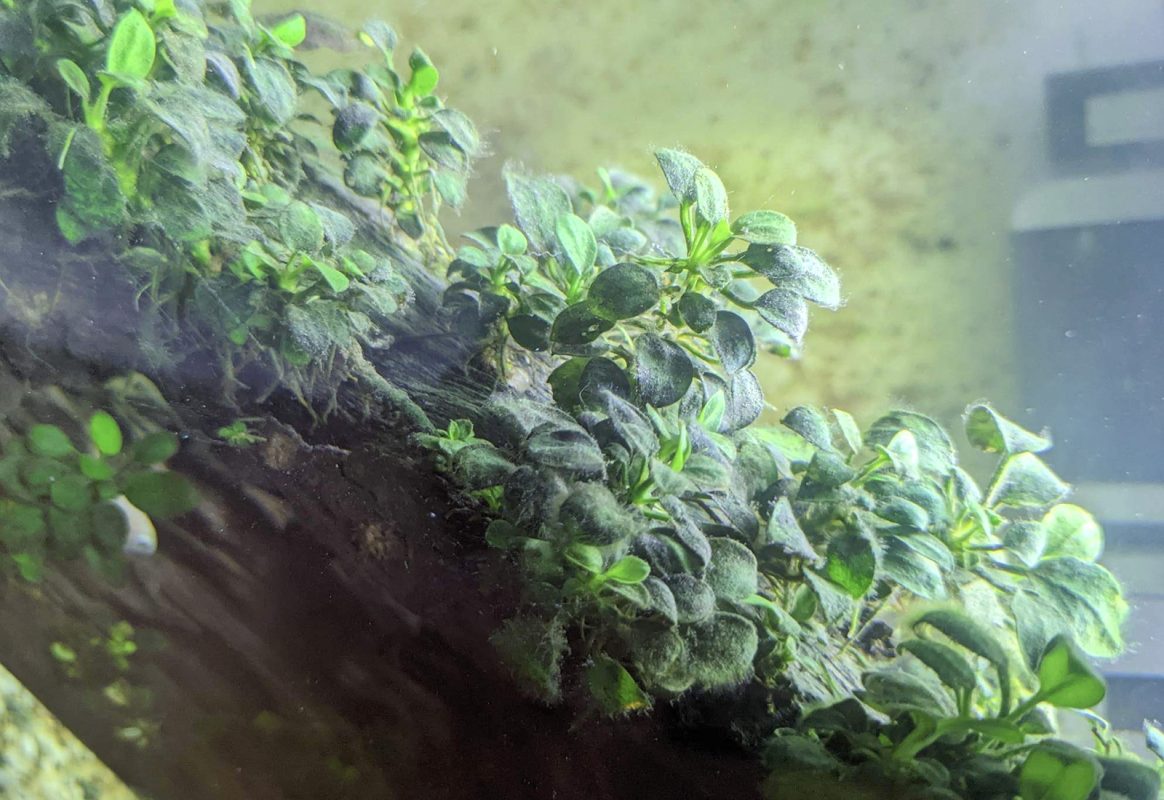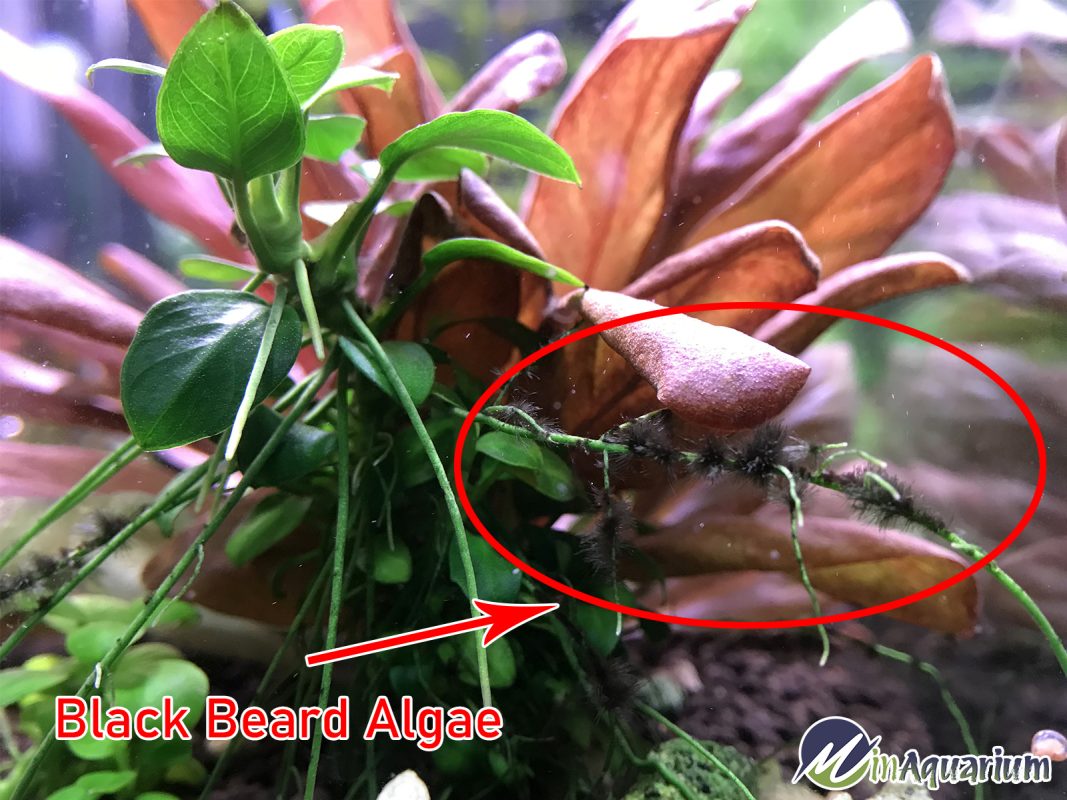Blogs
How to Eradicate Black Beard Algae in Your Fish Tank: A Comprehensive Guide
Black beard algae (BBA), also known as brush algae, is the nemesis of aquarists worldwide. Its unsightly, coarse, hair-like appearance can quickly infest your aquatic paradise, turning your beautiful aquarium into a murky mess. This stubborn algae is not only an eyesore but can also outcompete plants for essential nutrients, disrupting the delicate balance of your underwater ecosystem. If you’re desperately seeking a way to rid your tank of this unwelcome guest, fret not. This guide delves deep into various eradication methods, from chemical treatments to natural solutions, helping you reclaim the aesthetics and health of your beloved fish tank.

Identifying Black Beard Algae
Before waging war on BBA, it’s crucial to be able to identify it correctly. Misidentification can lead to ineffective treatment methods, further exacerbating the problem.
Visual Characteristics
- Color: BBA tends to be black or reddish-black. Its color can sometimes vary from deep green to dark brown.
- Appearance: The algae forms tufts that cling to surfaces within the tank, resembling a scruffy beard. It’s commonly found on driftwood, rocks, and plant leaves.
Texture
- Coarse: The texture is coarse and hair-like, standing out from other types of softer algae.
- Firm: When touched, it feels firmly attached to the surfaces.
Growth Pattern
- Rapid Spread: BBA can quickly form dense mats, covering surfaces rapidly if not controlled.
- Colonization: Unlike some algae types that float freely, BBA is notorious for adhering stubbornly to surfaces making it challenging to remove.
Root Cause Analysis
Understanding why BBA has taken a liking to your tank is essential for a long-term solution. Addressing the root causes can prevent future outbreaks.
Nutrient Imbalance
- Phosphates: High levels of phosphates are a breeding ground for BBA. These can stem from fish food, plant debris, and waste.
- Nitrates: Elevated nitrates similarly contribute to algae problems. Overfeeding and infrequent water changes are usual culprits.
Insufficient Water Circulation
- Stagnant Water: Poor water movement allows nutrients to settle, creating hotspots perfect for algae growth.
- Equipment Check: Ensure that your filtration and aeration systems are working optimally to foster circulation.
Carbon Dioxide Deficiency
- CO2 Levels: BBA thrives where CO2 is scarce. Plants, devoid of sufficient CO2, cannot outcompete algae for nutrients.
- Test Kits: Regular monitoring and use of CO2 systems can help maintain adequate levels.
High Light Intensity
- Excessive Lighting: Too much light can stress plants and fish while encouraging algae proliferation.
- Lighting Schedule: Keep your tank lighting to a sensible duration of about 8-10 hours daily.
Overstocking
- Waste Management: Too many fish mean more waste, raising nutrient levels in the water.
- Balanced Ecosystem: Maintain optimal stocking levels for a balanced ecological system.
Effective Algae Removal Methods
Identifying the cause is half the battle. Implementing various strategies in harmony is the other half that ensures complete eradication of BBA.
Hydrogen Peroxide Treatment
Hydrogen peroxide, a common household disinfectant, can be an effective tool in your arsenal against BBA.
- Prepare a Solution: Dilute 3% hydrogen peroxide with aquarium water. The typical ratio is 1 part hydrogen peroxide to 4 parts water.
- Targeted Application: Use a syringe or dropper to apply the solution directly to the clumps of algae. To avoid collateral damage, steer clear of sensitive plants and fish.
- Whole Tank Treatment: Add the solution near your tank’s pump outlet for an even distribution, ensuring the concentration is not too high to avoid stressing your tank inhabitants.
- Monitoring Progress: The algae should start fading in color within a few days and die off entirely after about a month.
Manual Removal
Manual removal might seem tedious, but it’s essential for persistent infestations.
- Tools Required: Utilize soft brushes, such as toothbrushes, and tweezers.
- Spot Treatment: Identify the places where BBA is most rampant—usually on rocks, decorations, and plant leaves.
- Gentle Scrubbing: Scrub gently to dislodge the algae without harming the fish or plants.
- Immediate Extraction: Use a gravel vacuum or siphon to remove the dislodged algae particles from the water.
Biological Filtration Enhancement
Boosting the beneficial bacteria in your tank can naturally keep nutrients in check.
- Beneficial Bacteria: These bacteria compete for the same nutrients that algae feed on.
- Supplementation: Consider adding bacterial supplements to your tank to ramp up the biological filtration capability.
Nutrient Management
Effective nutrient management can create an inhospitable environment for BBA.
- Phosphate Removal: Employ phosphate-removing media in your filter.
- Plant Selection: Choose fast-growing plants that consume a lot of nutrients, hindering algae growth.
Water Circulation and Oxygenation
Improving water flow and oxygen levels can make your tank less conducive to BBA.
- Enhanced Circulation: Install additional water pumps or power heads to increase the water flow.
- Surface Agitation: Encourage surface agitation to increase oxygen levels.
Lighting Optimization
Finding the right balance of light can help keep BBA under control.
- Reduce Intensity: Lower the intensity of your aquarium lights.
- Limit Duration: Keep the light on for 8-10 hours a day to avoid overstimulating algae growth.
Stocking Levels and Waste Management
Proper stocking and waste management are critical to maintaining low nutrient levels.
- Avoid Overstocking: Stick to recommended stocking levels for your tank size.
- Regular Maintenance: Perform frequent water changes and substrate vacuuming to remove excess waste.
Algaecides and Chemical Treatments
Chemical treatments should be a last resort due to their potential risks.
- Safety First: Choose products that are safe for your tank’s inhabitants.
- Follow Instructions: Strictly adhere to the manufacturer’s directions to prevent harmful side effects.
Physical Barriers and Prevention
Taking preventive measures can help avoid future BBA outbreaks.
- Quarantine New Plants: Isolate new plants in a separate tank for a few days to ensure they’re algae-free.
- UV Sterilizers: Install UV sterilizers to kill free-floating algae spores.
- Regular Water Changes: Consistent water changes help keep nutrient levels in check.
Using Fish to Control Black Beard Algae
Introducing natural algae eaters to your tank can be a fruitful strategy.
- Crossocheilus Oblongus (Siamese Algae Eater): These fish are known to have a voracious appetite for BBA. They nibble continuously on the algae clinging to plant leaves and other surfaces.
- Amano Shrimp: Another excellent addition, these shrimp are efficient cleaners and will gladly feast on BBA.
- Plecos: Certain catfish species, like the Bristlenose Pleco, also graze on algae, contributing to the overall cleanliness of your tank.
Ensuring that these algae eaters are well-fed and living in suitable conditions is vital for their effectiveness. A balanced diet and proper tank parameters will keep them healthy and hungry for algae.
FAQs
Can black beard algae hurt fish?
While black beard algae itself isn’t harmful to fish directly, it can indirectly affect them. Dense coatings of BBA can limit the light available to plants, leading to poor plant health and oxygen levels. In extreme cases, it can also make the tank look unpleasant and stressful for fish.
What is the best black beard algae remover?
The best remover is subjective and depends on your tank’s specific conditions. Hydrogen peroxide treatment is effective for spot removal, while liquid carbon additives like Flourish Excel provide a broader approach. Manual removal, when combined with biological control via algae-eating fish, offers a balanced and often safer method.
How long will it take to get rid of black beard algae?
The eradication timeline varies. Hydrogen peroxide treatment can show visible effects within a few days, but total removal might take up to a month. Manual removal and biological control methods might take longer but offer a sustainable solution.
Can black beard algae come back after being removed?
Unfortunately, yes. If the underlying causes such as nutrient imbalance, poor water circulation, or excessive lighting are not addressed, BBA can return. Consistent maintenance and preventive measures are essential to keep it at bay.
Is black beard algae contagious to other tanks?
BBA can spread to other tanks if contaminated equipment or plants are transferred without proper cleaning. Quarantining new plants and cleaning equipment thoroughly before use in different tanks can help prevent its spread.
Conclusion
Battling black beard algae requires a multifaceted approach, combining chemical, manual, and biological methods for the best outcome. By understanding its root causes and adopting diverse removal strategies, you can transform your algae-infested tank back into a vibrant, healthy aquatic habitat.
Key Takeaways:
- Identifying BBA: Recognize it through its visual and textural traits.
- Addressing Root Causes: Nutrient management, improved water circulation, and adequate CO2 levels are essential.
- Utilizing Diverse Methods: Hydrogen peroxide treatments, manual removal, improving biological filtration, and using natural algae eaters work best when combined.
Remember, patience and consistent maintenance are the golden keys to maintaining a clean and healthy aquarium environment.
References
- Aquarium Advice
- The Spruce Pets
- Seachem Flourish Excel Product Information
- Hydrogen Peroxide Aquatic Use
- Siamese Algae Eater Care Guide
By adhering to these guidelines and understanding the multi-layered approach to eradication, you can victoriously reclaim your aquarium from the unwelcome clutches of black beard algae.

